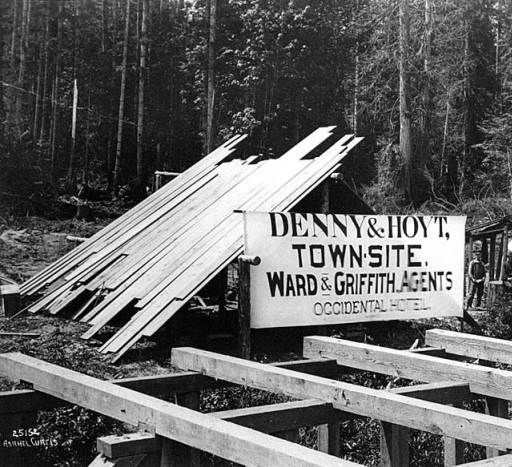Each neighborhood of Seattle proudly waves the banner of its unique name, and yet many were named in a similar way: by real estate investors. Fremont in Seattle was also named by real estate investors. What made the Seattle neighborhood called Fremont stand out from others, was its good location, its jump-start after Seattle’s Great Fire of 1889, and its vigorous developers who utilized the growing streetcar system to advantage.
From Fremont, Nebraska, to Fremont in Seattle
In 1888 Edward and Carrie Blewett from Fremont, Nebraska, came to Seattle to make a land investment. Their contact in Seattle was Luther H. Griffith, also from Fremont, Nebraska, who had moved to Seattle in 1883 and was favorably impressed as he saw the growth of the city.
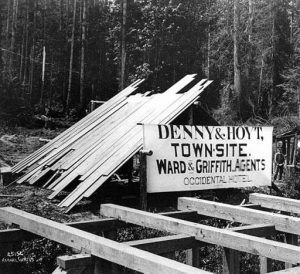
In 1888 Luther Griffith learned that a large tract of vacant land might become available for development, and he communicated this to the Blewetts. The Seattle banking and investment partnership of Arthur Denny and John P. Hoyt had already bought the land, but after only a few months they re-sold it at a profit to the Blewetts.
The Blewetts kept the plat name which had been assigned, “Denny & Hoyt’s Addition to Seattle” but since the land was outside of the city limits they named it as a separate town, Fremont. The Nebraska investors saw the advantages of Fremont as a Seattle residential suburb and as a future industrial site on Lake Union.
The Blewetts did not stay long, as they intended to be investors but not on-site developers of their property. On their behalf, in the summer of 1888 Luther Griffith, the Blewett’s representative in Seattle, began to advertise and sell lots in the new Fremont.
Fremont: a new suburb of Seattle
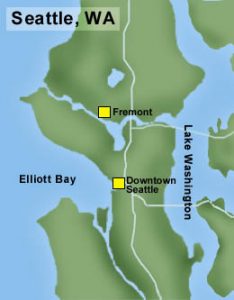
The new suburb of Fremont was located at the northwest corner of Lake Union, where a stream called The Outlet flowed westward toward Ballard. Early Seattle settlers had long visualized that this small creek could be enlarged to create a canal for sending logs out to Puget Sound, and for other industrial uses such as sending shipments of coal by boat.
Beginning in the 1850s all of Seattle’s earliest-developing settler communities had been located on waterfronts for ease of travel and for convenience of transporting goods via water. Fremont’s excellent location on one side of Lake Union had been preserved due to long-running legal problems, so that as of 1888 the (future) Fremont area still had not been developed.
The land area which today comprises “downtown Fremont” had been the homestead land claim of an early Seattle settler, William Strickler, in 1854. In 1861 Strickler disappeared and no one ever found out what happened to him. He was presumed dead but it took decades to resolve the legal issues. Finally as of 1887-1888 the land was declared available, and development began.
The timing of the Fremont investment could not have been better. One year after the establishment of Fremont in 1888, Seattle’s Great Fire of June 6, 1889 caused city growth and development to be pushed outward from downtown. Across the USA, people heard of the Seattle Fire and knew that a construction boom would follow as the city rebuilt itself. An average of 2,000 people per month began arriving in Seattle. In one year’s time the city population jumped from 25,000 to 43,000.
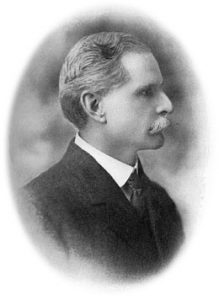
Fremont attracted residents and businesses in growth industries such as a lumber mill, an iron foundry, a tannery and a construction materials supply business. Investors and promoters of Fremont Luther H. Griffith and Edward C. Kilbourne were also involved in creation of a streetcar line which would carry potential buyers out via Westlake Avenue to the new development.
From Fremont another streetcar route ran to Guy Phinney’s private zoo (now Woodland Park.) Next, in the 1890s Luther Griffith and Edward C. Kilbourne went into partnership with real estate developer W.D. Wood to construct a streetcar line from Fremont to Green Lake.
By 1900 the Stone & Webster cartel had taken over ownership of streetcar lines in Seattle. As of 1910, Stone & Webster completed a railroad called the Interurban which ran through Fremont and continued on to the city of Everett about forty miles to the north.
The success of early developers and boosters in making Fremont a transit hub/transfer point, eventually led to the description of Fremont as the Center of the Universe.
Sources:
“Edward Corliss Kilbourne,” HistoryLink Essay #1251 by Louis Fiset, 1999.
“Interurban Rail Transit in King County and the Puget Sound Region,” HistoryLink Essay #2667 by Walt Crowley, 2000.
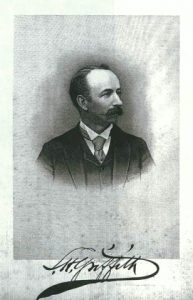
“Seattle’s Great Fire,” HistoryLink Essay #715 by Greg Lange, 1999. See also Essay#10743.
“Seattle Neighborhoods: Fremont Thumbnail History,” HistoryLink Essay #1320 by Patrick McRoberts, 1999.
“Seattle Neighborhoods: Phinney Thumbnail History,” HistoryLink Essay #3526 by Louis Fiset, 2001.
“Street Railways in Seattle,” HistoryLink Essay #2707 by Walt Crowley, 2000.
University of Washington Special Collections, Lake Union Improvement Company photo album of 1891.
“William D. Wood,” HistoryLink Essay #1169 by Louis Fiset, 1999.
“Woodland Park Zoo,” HistoryLink Essay #1481 by Walt Crowley, 1999.

